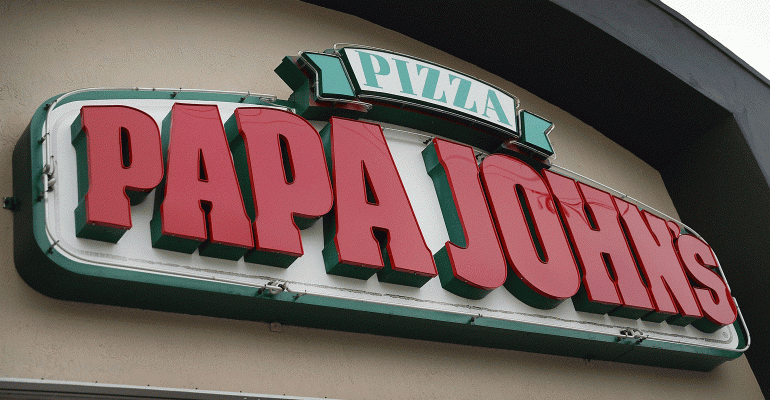While much of the restaurant industry has been steadily increasing menu prices to combat the current macroeconomic environment, Papa Johns is distancing itself from the pack, and is instead executing a “thoughtful approach to price and promotions” that keeps the overall cost down for a typical family of four, Papa Johns CEO Rob Lynch said during Thursday’s earnings call for the third quarter ended Sept. 24.
“When I came over from traditional QSR that was one of the things I really had to get my arms wrapped around, because when you go through a drive-thru, that’s the price you pay,” Lynch said in an interview with Nation’s Restaurant News. “In our category, there’s the regular menu price, the menu price on the digital ordering channels, and then we offer all of these promotions and discounts. So we have some flexibility on where we take pricing and how that pricing is perceived.”
Lynch said that Papa Johns has really held on to the barbell pricing strategy, which allows them to offer discounts and promotions to a price-conscious consumer on the simpler end of the menu, while at the same time charging more for premium options that usually end up on the menu innovation side of the menu, like the new epic garlic stuffed crust pizza.
“We’ve been able to really segregate the value-conscious consumer vs. the consumer that’s willing to spend more and therefore mitigate some of the inflation that we've seen in the business model.”
This differentiated pricing strategy has resulted in moderate sales and revenue growth for the third quarter, as Papa Johns reported 3% same-store sales growth for the North America portfolio, driven mainly by transactions growth, particularly with corporate stores. Net income, meanwhile, was dampened slightly by due to the company’s recent acquisition of 118 franchise restaurants in the U.K. market.
Papa Johns is also continuing its menu innovation push, with the release of both the epic garlic stuffed crust pizza (and the spicy version), as well as all-white boneless wings last quarter. The start of the fourth quarter also saw the expansion of the Papa Bites platform with the LTO Twix Papa Bites served with a caramel dipping sauce around Halloween time. Lynch said during Thursday’s call that the company believes product innovation and premium pricing positioning are unique attributes to the brand.
“We can’t get too far away from pizza and forget that we’re a pizza company, but we’re really bullish on our Papadias platform,” Lynch said. “We’ve developed a very loyal customer there and on this Papa Bites platform where we keep coming up with [new flavors] like Oreo, Twix, and chicken parmesan. They are shareable and can drive that incrementality. So I think that’s where 90% of our innovation lands.”
The menu innovation is a driving factor behind the push for more rewards members, especially since members have the highest frequency and tickets across all platforms. During the call, Lynch said that the company is currently working to enhance its loyalty program and anticipates improved performance in 2024.
Papa Johns executives also mentioned another focus for the company: renewed emphasis on new dayparts like lunch and late-night offerings, the latter of which would be boosted with labor from aggregator partnerships like DoorDash. Of course, Papa Johns is far from the first company to mention trying to capture the late-night daypart. After-hours dining has been trending this year as we move further away from the pandemic and brands try to unlock that younger demographic that’s looking for a post-dinner snack or meal, including Taco Bell, Wendy’s, White Castle, and more.
For the third quarter ended Sept. 24, Papa Johns reported total revenues of $523 million, up 2% from the same quarter the year prior. Net income was $17.2 million or $0.48 earnings per share, down from $19.2 million or $0.23 per share the same quarter in 2022.
Papa Johns reported 45 net unit openings in the second quarter, largely driven by international growth for a grand total of 5,825 stores systemwide.
Contact Joanna at [email protected]m

